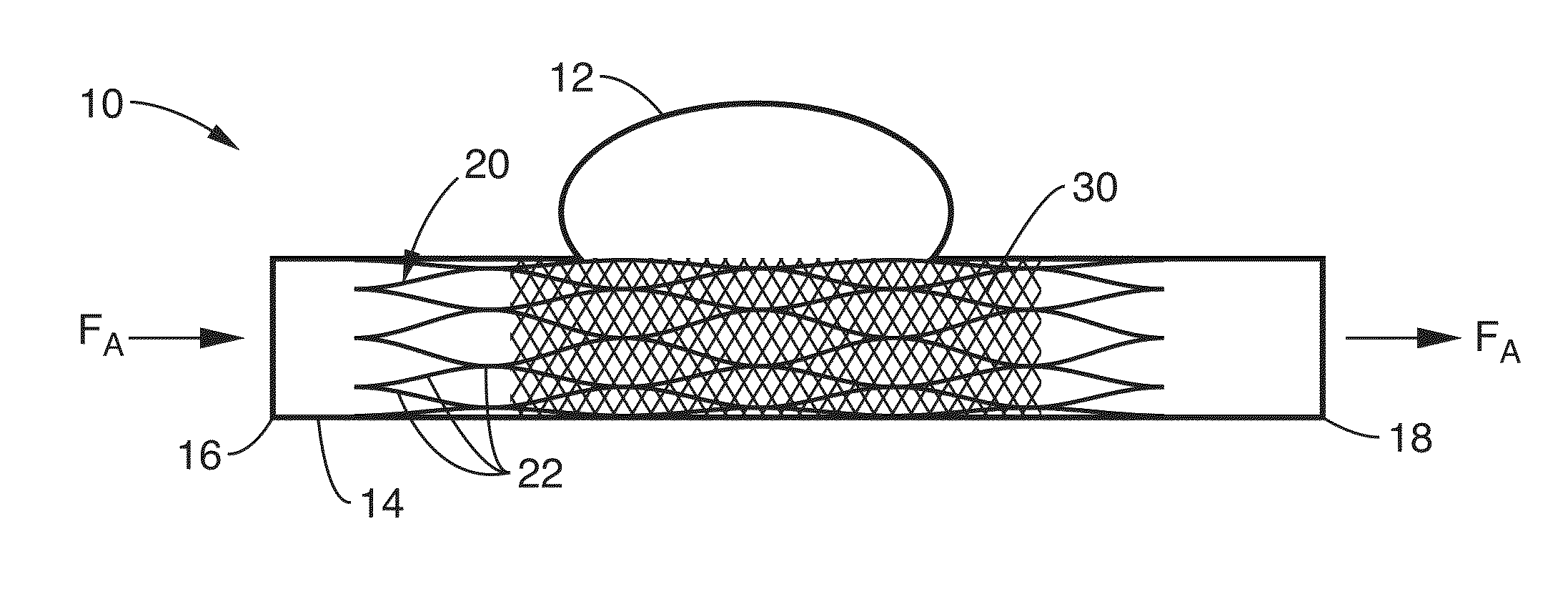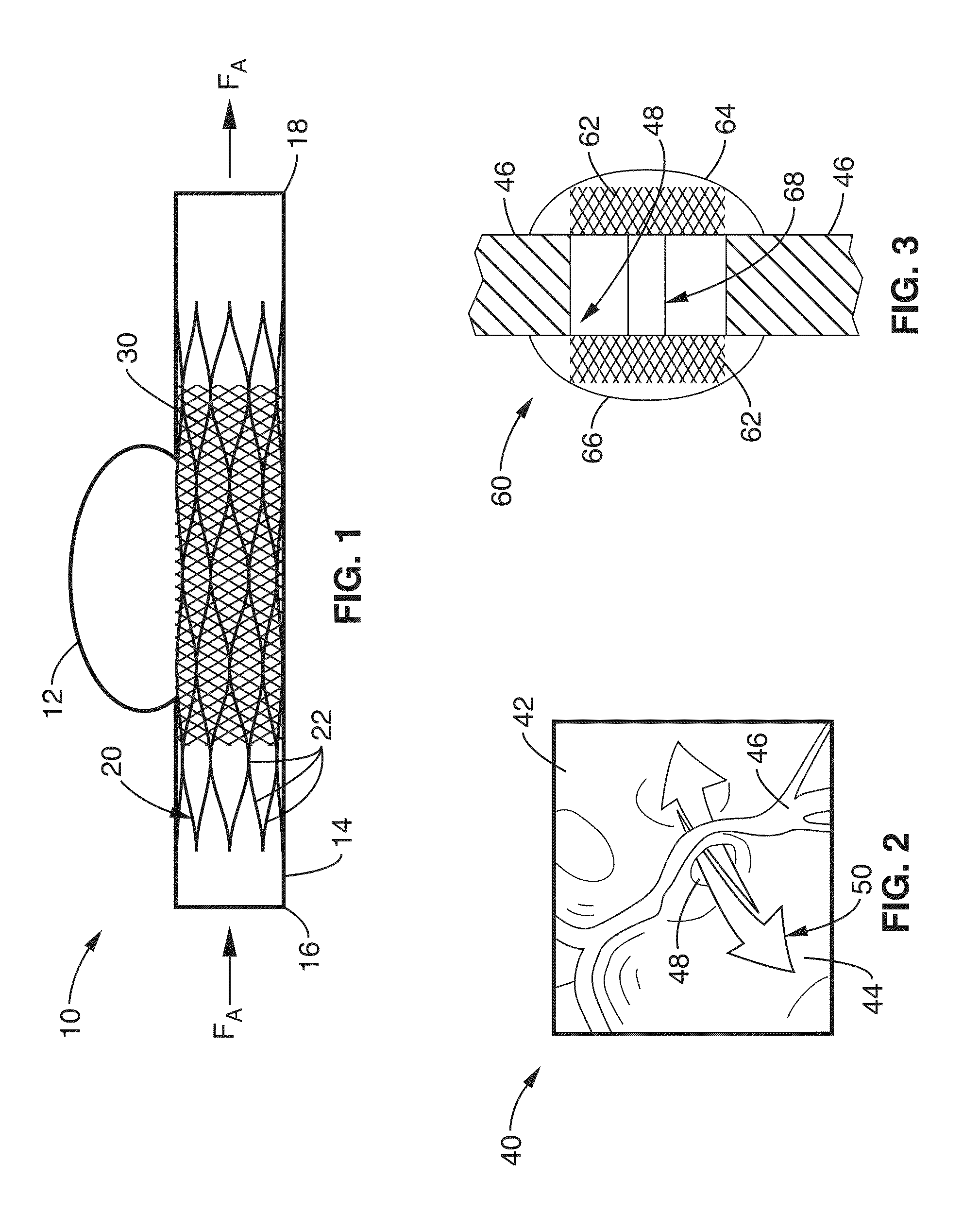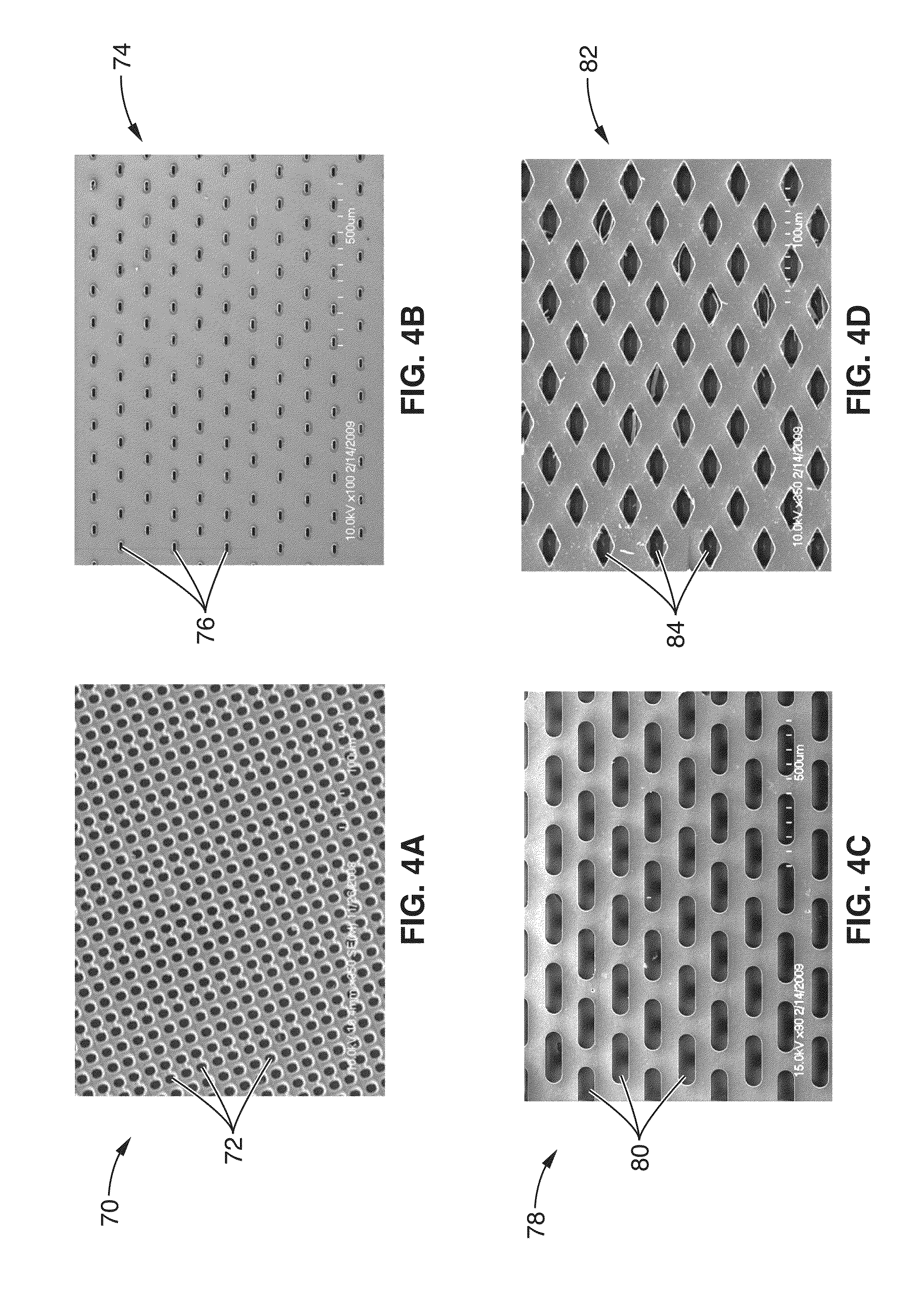Ultra-low fractional area coverage flow diverter for treating aneurysms and vascular diseases
a flow diverter and fractional area coverage technology, applied in blood vessels, prostheses, paper/cardboard articles, etc., can solve the problems of insufficient flow diversion of conventional stent structures, inability to precisely control the porosity to a tolerance of 1 micron, and inability to generate specific shapes and distributions precisely. , to achieve the effect of low profile and without intimal hyperplasia
- Summary
- Abstract
- Description
- Claims
- Application Information
AI Technical Summary
Benefits of technology
Problems solved by technology
Method used
Image
Examples
embodiment 1
[0123]2. A flow diversion apparatus according to wherein the treatment region comprises an aneurism; and wherein the clotting cascade is configured to occlude the aneurism.
[0124]3. The flow diversion apparatus of embodiment 1, wherein the fenestrations have a pore size of less than approximately 500 microns.
embodiment 3
[0125]4. The flow diversion apparatus of embodiment 3, wherein the fenestrations have a pore size of less than approximately 300 microns.
[0126]5. The flow diversion apparatus of embodiment 3, wherein the fenestrations have a pore size between approximately 200 microns and 400 microns.
[0127]6. The flow diversion apparatus of embodiment 1, wherein the thin-film sheet comprises a surface coverage of less than approximately 30%.
embodiment 6
[0128]7. The flow diversion apparatus of embodiment 6, wherein the thin-film sheet comprises a surface coverage of between approximately 5% and 20%.
[0129]8. The flow diversion apparatus of embodiment 1, wherein the thin-film sheet comprises thin-film Nitinol having at least one super-hydrophilic surface.
PUM
| Property | Measurement | Unit |
|---|---|---|
| pore size | aaaaa | aaaaa |
| pore size | aaaaa | aaaaa |
| pore size | aaaaa | aaaaa |
Abstract
Description
Claims
Application Information
 Login to View More
Login to View More - R&D
- Intellectual Property
- Life Sciences
- Materials
- Tech Scout
- Unparalleled Data Quality
- Higher Quality Content
- 60% Fewer Hallucinations
Browse by: Latest US Patents, China's latest patents, Technical Efficacy Thesaurus, Application Domain, Technology Topic, Popular Technical Reports.
© 2025 PatSnap. All rights reserved.Legal|Privacy policy|Modern Slavery Act Transparency Statement|Sitemap|About US| Contact US: help@patsnap.com



